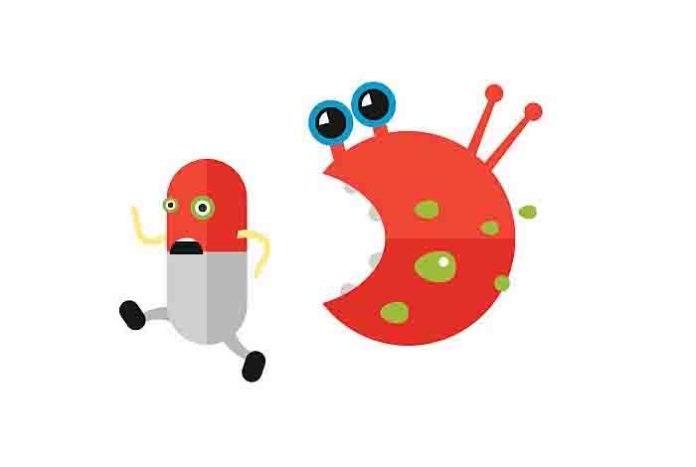
The superpowers of bacteria can be harnessed to save humanity! Researchers at the Washington University School of Medicine in St. Louis have discovered some bacteria that use drugs as food and convert it into food. This discovery can pave a new way for cleaning soil and water that have been contaminated with the antibiotic.
Several bacteria can help in disarming antibiotics by tying them up, while others pump the antibiotics out of their bodies before they start working. A few can even digest antibiotics.
Now, researchers have an explanation on how these bacteria gobble up antibiotics. This new finding can help fight against antibiotic resistant superbugs in future. This fact was discovered 10 years ago and the scientist were shocked knowing that. This finding can help design novel and better antibiotics in future and help in dealing with the problems that lead to the development of antibiotic resistance in bacteria like spillage from drug industries, wastes from farms, where animals are given antibiotics in order to make them grow quickly, and sewage from hospitals.
Drug-resistant bacteria can be found in every nook and corner of the world and are increasingly becoming a threat to the human population. As per the Centers for Disease Control and Prevention (CDC), there are more than 2 million people in the U.S. alone that get infected by antibiotic-resistant bacteria each year, out of which, 23,000 lose their lives to such infection. Globally, these infections claim nearly 700,000 lives annually.
Antibiotic resistant bacteria do not need a special recipe for development. They are developed when people take antibiotics for treating viral diseases like flu, ear infections, cough and cold. The virus causing the disease is not affected by the antibiotic; rather, it gives birth to antibiotic-resistant bacteria. They are also found in hospitals, where antibiotics and bacteria co-exist. One of the strangest places to find antibiotic resistant bacteria is animal farms, where the animals are regularly given antibiotics; not to fight diseases, but to make them plumper and grow faster.
Bacteria are capable of developing resistance against antibiotics almost immediately as most of our antibiotics are extracted from the bacteria itself. For a bacteria, it simply means killing their rival bacteria. So, some bacteria in the population already carry the genes to fight against the enemy bacteria.
This research team was not the first one to discover antibiotic-eating bacteria. It was in the 1960s that this feature of bacteria was discovered. But, this finding was not thought to be of significant importance as it was rare and did not affect humans. It had not been reported since its discovery, but this team showed that antibiotics were present in the platter for many more bacteria.
Scientists have now decoded how these drug-guzzling bacteria can break down and gulp down antibiotics. Not only this, they even made their own version of drug-munching bacteria.
The first step of the whole drug-munching process is to lessen or remove the toxicity of the antibiotic. For this, the mechanism used by these bacteria was found to be similar to that of drug-resistant superbugs as reported by the team in the Nature Chemical Biology. [1] Further, the scientists discovered specialized enzymes that were being used by these bacteria to chop up the antibiotic into small fragments.
Understanding these principles and identifying the genes that help achieve this feat can aid in developing tailored E.coli cells that could survive in a pool of antibiotics and break it down to release carbon molecules that can be utilized by each and every life form on this planet.
Scientists actually exploited this idea to make two strains of E. coli that could use penicillin as a source of carbon. The goal was not to create scary and powerful superbugs in the lab, but to take a small step ahead in the direction of managing antibiotic pollution, arising from different sources.
This would help the scientists in managing bacteria that evolve at an extremely fast rate and constantly develop resistance against the newly synthesized antibiotics. These small discoveries can be stitched together to create something amazing for managing drug resistance.
A research team at Viosera, a company involved in synthesizing new antibiotics, took nearly a decade to learn working with one of the tiniest organisms on the planet, growing them, identifying the sequence of their genes and finally, experimenting on them. Now that they have decoded the mystery, it is out there for others to gather and make use of it to develop something for the benefit of the mankind. This research at Viosera was funded by the National Institutes of Health (NIH).
A fortunate fact about the research is that none of the common infection-causing bacteria has turned into an antibiotic-eating bug till date. Researchers believe that antibiotic-eating germs are not going to evolve as disease-spreading bacteria anytime soon. As observed by the scientists, none of the bacteria in the lab ate antibiotics, unless there was nothing else available to consume for them. When the bacteria are present inside a human body, they have a number of food options and supposedly, they would never turn to antibiotics for getting carbon.










